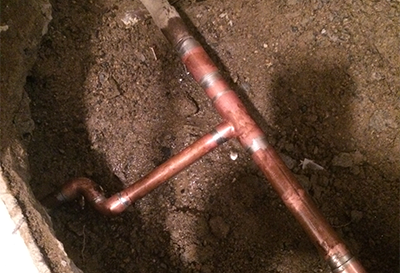How to Check If Your House Has a Concealed Leakage
How to Check If Your House Has a Concealed Leakage
Blog Article
We've stumbled upon this article involving Hacks to detect leaks listed below on the web and reckoned it made good sense to discuss it with you in this article.

Early discovery of dripping water lines can alleviate a possible calamity. Some tiny water leakages might not be noticeable.
1. Examine the Water Meter
Examining it is a guaranteed way that helps you find leakages. If it moves, that suggests a fast-moving leakage. This implies you might have a sluggish leakage that might even be underground.
2. Inspect Water Consumption
If you identify abrupt changes, despite your usage being the exact same, it means that you have leaks in your plumbing system. A sudden spike in your expense shows a fast-moving leak.
Meanwhile, a constant boost monthly, despite the very same routines, shows you have a slow leakage that's additionally gradually intensifying. Call a plumber to thoroughly examine your residential or commercial property, particularly if you feel a cozy area on your floor with piping below.
3. Do a Food Coloring Examination
When it comes to water usage, 30% comes from toilets. If the shade somehow infiltrates your bowl during that time without flushing, there's a leakage in between the container and dish.
4. Asses Exterior Lines
Do not forget to inspect your outdoor water lines as well. Test faucets by attaching a yard pipe. Must water seep out of the link, you have a loose rubber gasket. Change this as well as make sure all connections are tight. If you've got an automatic sprinkler, it will certainly help get it professionally checked out and kept each year. One little leakage can squander tons of water and surge your water expense.
5. Evaluate the circumstance and check
Property owners need to make it a habit to examine under the sink counters and even inside closets for any kind of bad odor or mold development. These 2 warnings suggest a leak so punctual focus is required. Doing regular evaluations, also bi-annually, can save you from a major problem.
Much more significantly, if you know your residence is currently old, maintain a watchful eye on your heating units, hose pipes, pipes etc. Look for stainings and also damaging as a lot of pipelines and also devices have a life expectancy. They will additionally naturally degrade due to wear and tear. Do not wait for it to intensify if you presume leaking water lines in your plumbing system. Call an expert plumber today so you do not wind up with a horrible mess in your house.
Early discovery of dripping water lines can minimize a potential calamity. Some small water leakages may not be visible. Examining it is a guaranteed way that assists you discover leaks. One small leakage can squander tons of water and also surge your water bill.
If you suspect leaking water lines in your plumbing system, don't wait for it to rise.
WARNING SIGNS OF WATER LEAKAGE BEHIND THE WALL
PERSISTENT MUSTY ODORS
As water slowly drips from a leaky pipe inside the wall, flooring and sheetrock stay damp and develop an odor similar to wet cardboard. It generates a musty smell that can help you find hidden leaks.
MOLD IN UNUSUAL AREAS
Mold usually grows in wet areas like kitchens, baths and laundry rooms. If you spot the stuff on walls or baseboards in other rooms of the house, it’s a good indicator of undetected water leaks.
STAINS THAT GROW
When mold thrives around a leaky pipe, it sometimes takes hold on the inside surface of the affected wall. A growing stain on otherwise clean sheetrock is often your sign of a hidden plumbing problem.
PEELING OR BUBBLING WALLPAPER / PAINT
This clue is easy to miss in rooms that don’t get much use. When you see wallpaper separating along seams or paint bubbling or flaking off the wall, blame sheetrock that stays wet because of an undetected leak.
BUCKLED CEILINGS AND STAINED FLOORS
If ceilings or floors in bathrooms, kitchens or laundry areas develop structural problems, don’t rule out constant damp inside the walls. Wet sheetrock can affect adjacent framing, flooring and ceilings.
https://www.servicemasterbyzaba.com/blog/how-to-detect-water-leakage-in-walls/

I have been very focused on Leaking water lines and I really hope you enjoyed the blog posting. For those who enjoyed our blog posting if you please make sure you remember to share it. Thank-you for going through it.
Report this page